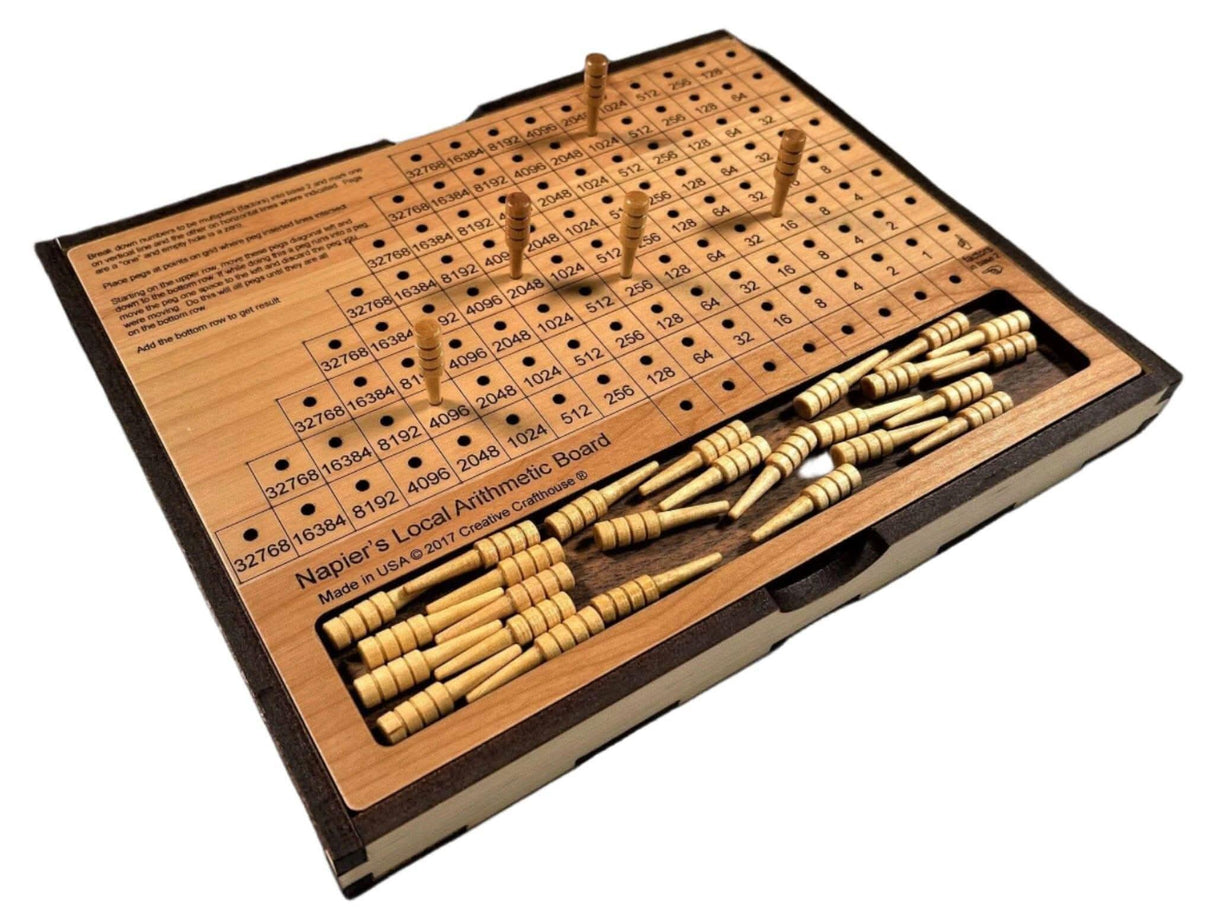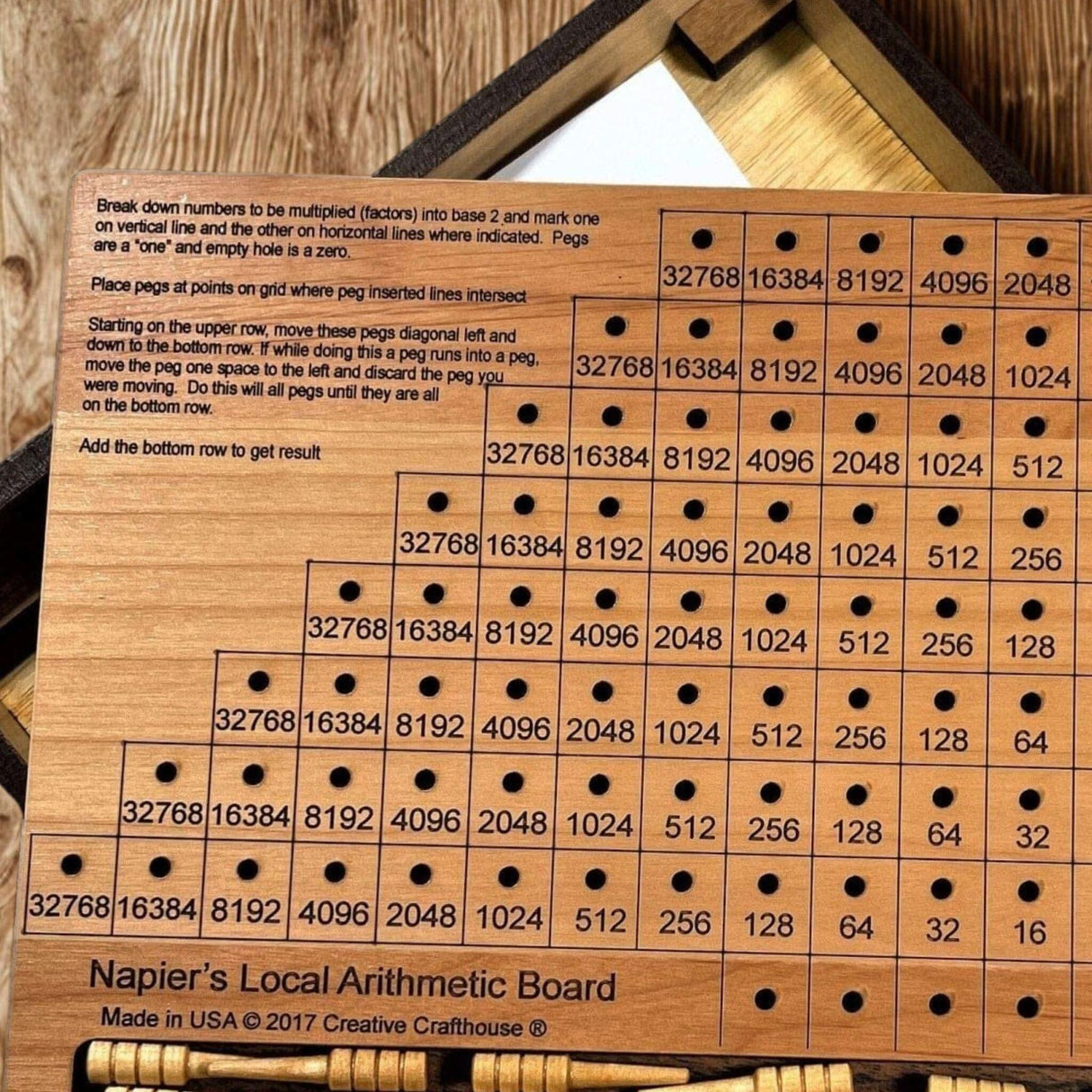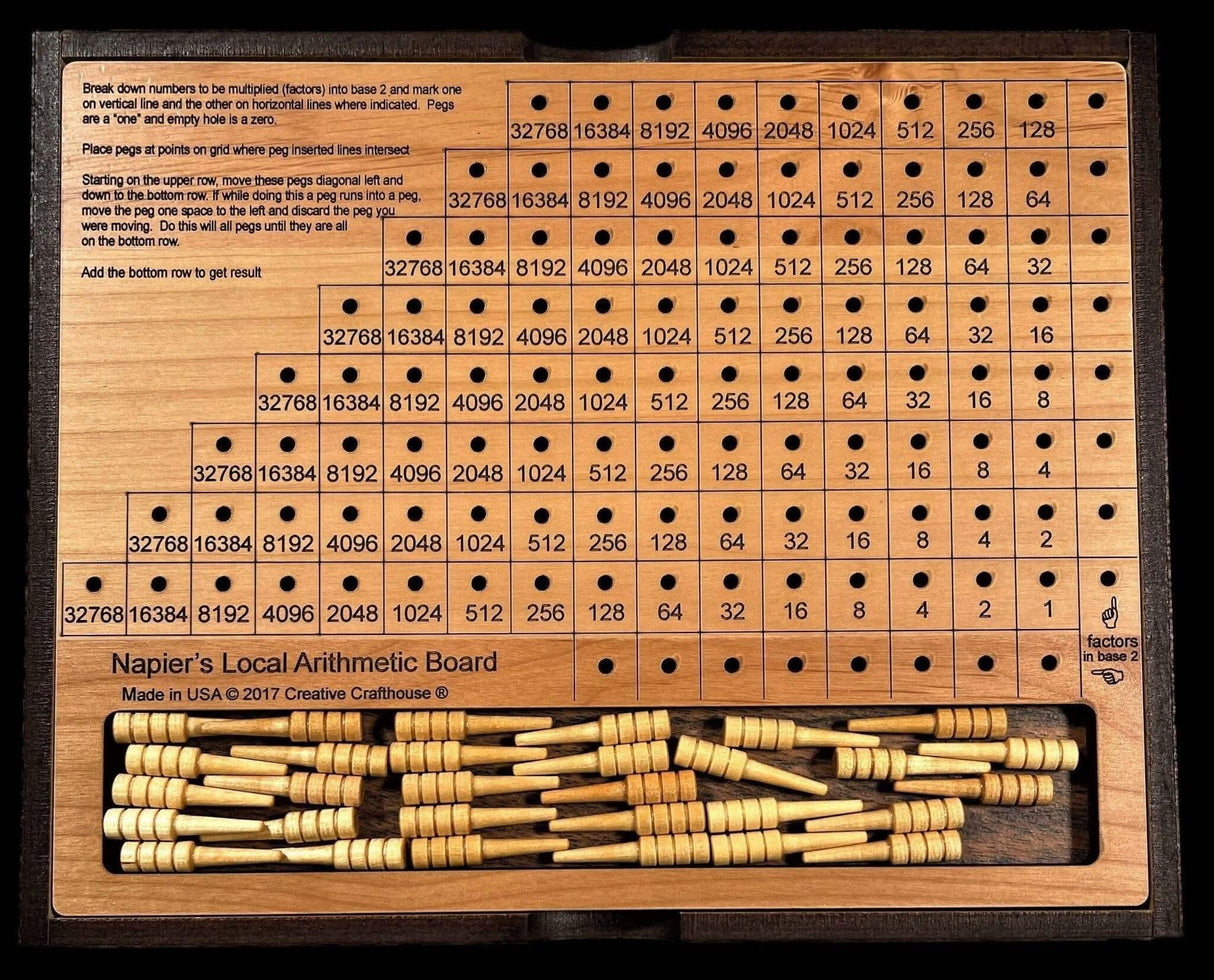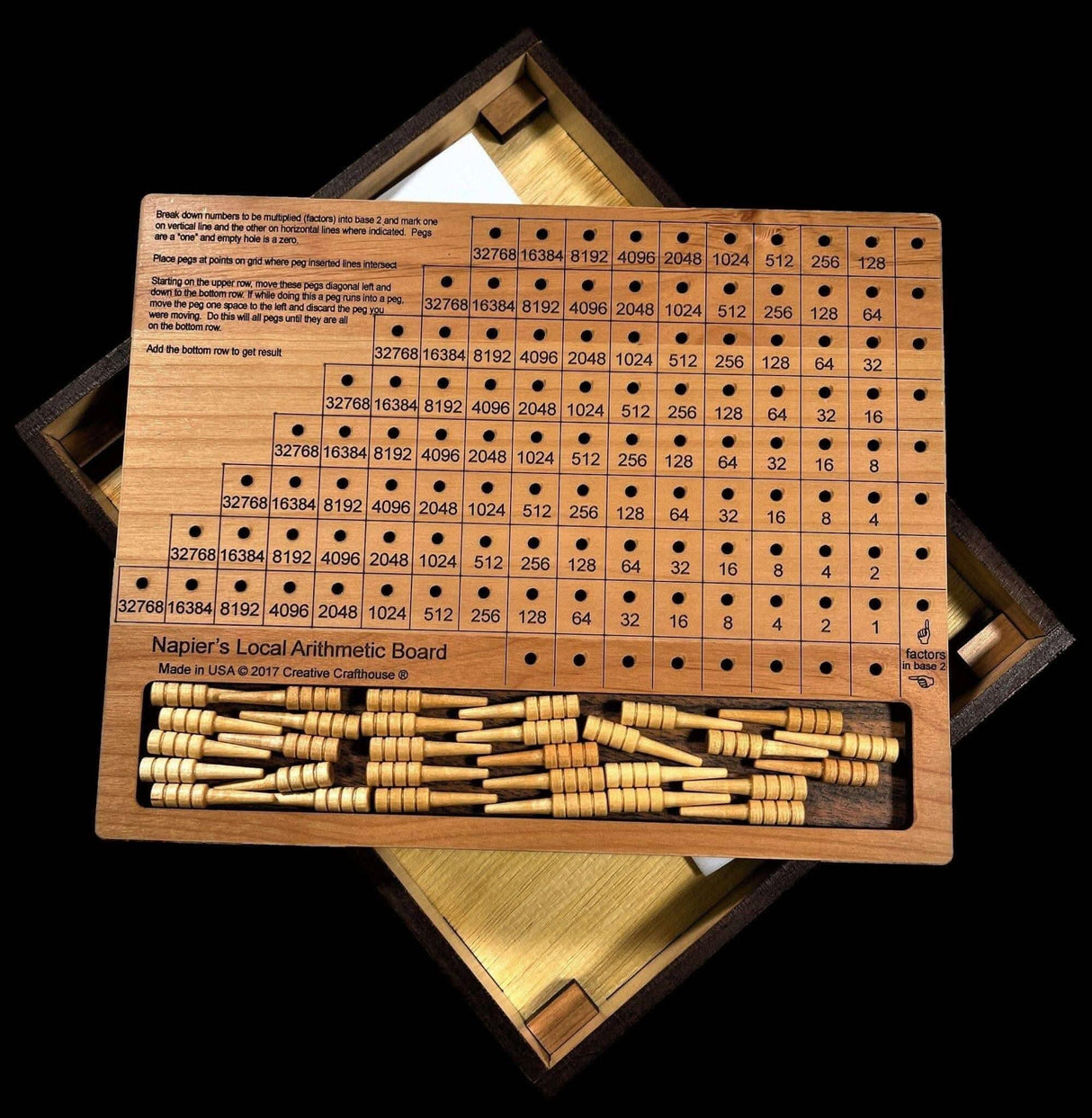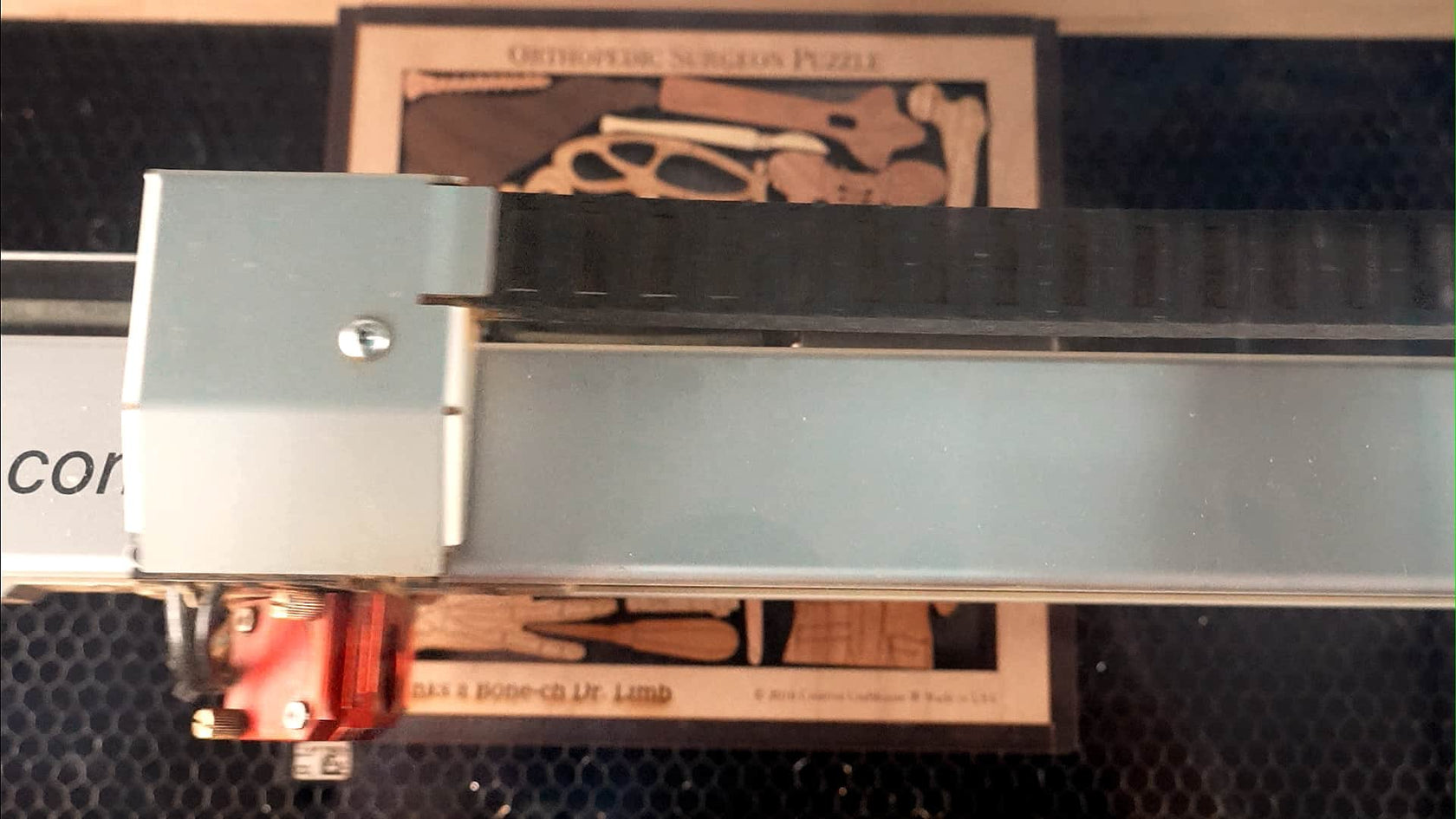Napiers Local Arithmetic Board | STEM Montessori Math Learning Tool
Napiers Local Arithmetic Board | STEM Montessori Math Learning Tool is backordered and will ship as soon as it is back in stock.
Couldn't load pickup availability
Delivery and Shipping
Delivery and Shipping
All standard orders normally ship within 1 business day.
Custom orders normally ship within 2 business days.
Description
Description
Its an amazing thing to use this board and get a sense of the history as well as the mathematics behind it.
The set comes with base, cover, and pegs. The pegs are nice quality cribbage board pegs. The set measures about 7" x 10" with the text deeply laser engraved. Wood shown in picture and video is alder, but may be varied. Peg color may also vary.
Made in our Hudson, Florida shop.
Here is an idea of how it works:
Break down numbers to be multiplied (factors) into their base 2 components. One factor goes on the right hand column and
the other on the bottom row. In the example 24 x 36, the factor 24 is composed of the numbers 16 and 8. Put pegs in the 16 hole and the 8 hole on the right column. The factor 36 is composed of the numbers 32 and 4. Put pegs in the 32 and 4 holes in the bottom row.
Starting on the upper row, move pegs diagonal left and down to the bottom row. Then add the pegs on the bottom row to get the answer. See example below for 24 x 36.
If while moving pegs diagonal, you run into another peg, then you will have 2 pegs on the same spot. The procedure is to move one peg left and discard the other. That is, if 2 pegs were on 256 from the "8" row; then move one peg to 512 and discard the other.
Materials: Wood
Personalize it!
Personalize it!
Click YES above the quantity selector to add a personalized laser engraving to your puzzle or game.
- Perfect for gifts
- Business marketing opportunity
Recommended age group
Recommended age group
Difficulty level
Difficulty level
Payment & Security
Payment methods
Your payment information is processed securely. We do not store credit card details nor have access to your credit card information.
Personalize It!
Did you know we can add a custom laser engraving to every puzzle and game? Well, we can. Add a personal touch to your gift with a name or message.
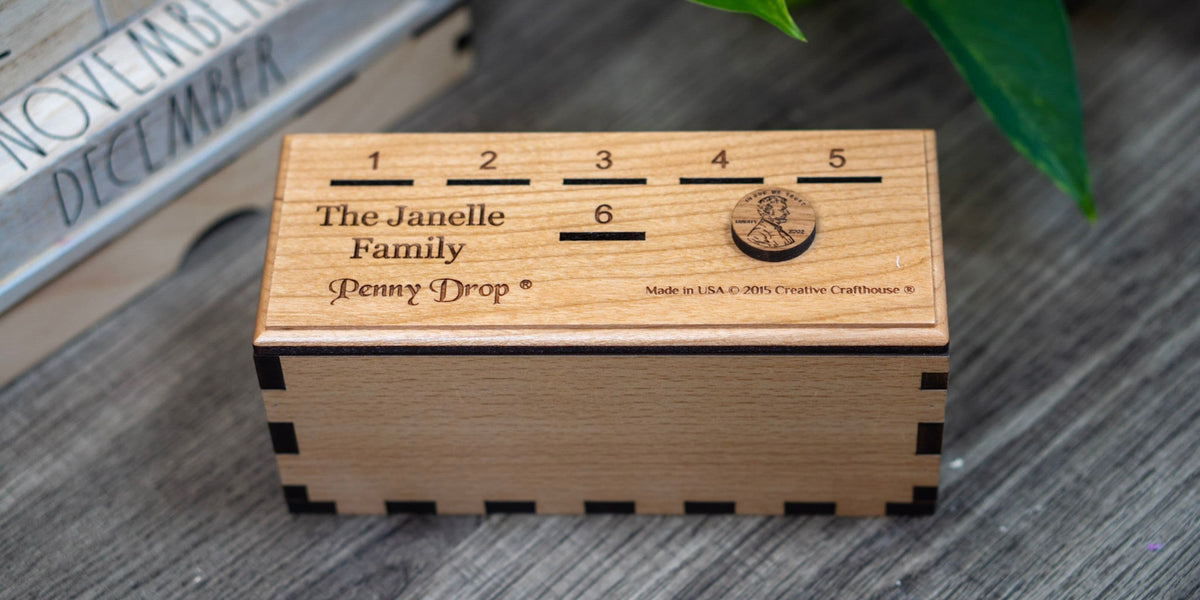
Collections for you
Frequently Asked Questions
Shipping
What countries do you ship to?
What countries do you ship to?
We ship all around the world. If you encounter an issue at checkout, please use the Chat Box to contact us. A real person will assist you.
How long will it take to receive my order?
How long will it take to receive my order?
Standard shipping normally takes 3-5 days. Next-day shipping is available on all domestic orders (for an additional charge). International shipping times vary depending on the product and destination (estimated at checkout).
Expedited shipping is available at checkout.
Returns and Refunds
How do I return a product?
How do I return a product?
Items must be returned within 30 days after receiving your order. Items must be returned in the same condition in which they were received, be unworn/unused, have any tags still attached, and include all the original packaging.
Custom/Personalized items can only be returned if we made a mistake on the customization/engraving.
How long will it take to receive my refund?
How long will it take to receive my refund?
Refunds are processed within 7 days from when we receive the item(s).
